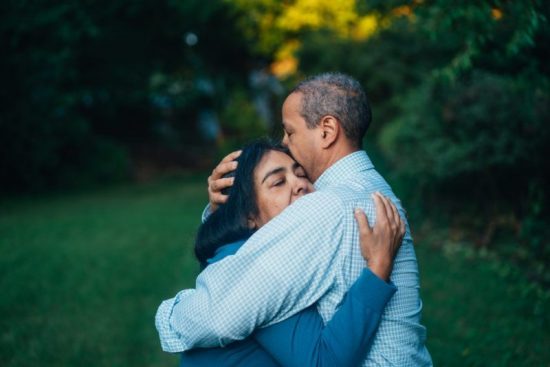Reframing Post-Traumatic Growth
“In some ways suffering ceases to be suffering at the moment it finds a meaning.”
– Viktor Frankl
On December 14, 2012, one of the most horrific shootings in American history occurred at Sandy Hook Elementary School in Newtown, Connecticut. Twenty children, all in the first grade, and six adults were shot and killed at the hands of a mass shooter.
No one can imagine what it’s like to lose a child to a mass shooter, but the families affected by the Sandy Hook shooting had to face that grim reality. Not only did the survivors and remaining family members have to live through the ordeal, but they also had to figure out how to continue living with their grief once it was all over.
You can’t imagine that type of loss until it happens to you, but some of the people affected by the Sandy Hook shooting went on to accomplish amazing things. How is this possible? The answer may lie in post-traumatic growth.

What is post-traumatic growth?
Post-traumatic growth is a concept coined by psychologists Richard Tedeschi and Lawrence Calhoun in the mid-1990s to explain how certain people not only recover from traumatic experiences, but use those experiences as fuel. Instead of allowing the horrible things they experienced to dictate their future, they turn their pain into purpose, finding a new appreciation for and fulfillment in life.
How long does post-traumatic growth take? The truth is that it can take a long time and a lot of effort. Trauma shakes us to our core. It challenges our most deeply held beliefs. And it isn’t easy to overcome. Many people are unable to let go of the past – but your past is not your future unless you live there.
As a culture, we often focus our attention on post-traumatic stress disorder (PTSD), the condition that causes people to live in a state of anxiety, fear and depression after a traumatic incident. There are manyof studies about PTSD, but hardly any about post-traumatic growth.
“There are few studies done on post-traumatic growth, how people have been through the most horrific experiences a human being could possibly imagine, and not only transcend the experience, but actually grow so much they can help other people,” says Tony. But he has met plenty of powerful human beings who absolutely embody the answer to the question, “What is post-traumatic growth?”
Examples of post-traumatic growth

One year after the Sandy Hook shooting, Tony Robbins went to visit those affected by school shootings – and he encountered some of the greatest examples of post-traumatic growth out there. Before meeting Sandy Hook survivors, Tony met with Nick Walczak, a survivor of the 2012 Chardon High School shooting in Ohio. Nick was shot multiple times by a fellow student and is now paralyzed.
Nick will spend the rest of his life in a wheelchair, and yet when Tony spoke with him, he seemed hopeful. He embarked on a journey of post-traumatic growth, and met with those dealing with the aftermath of the Sandy Hook shooting alongside Tony Robbins to deliver a message of hope and positivity.
“It was a very, very powerful, powerful event. We introduced ourselves, we told our story. I feel like I got a lot out of that, and I feel like the other families, they got a lot out of it, too,” explained Walczak. “You just feel the connection in the room, when you’re talking to survivors, survivors’ families. It’s a connection that I feel like, is necessary, to be able to keep going on a positive level.”
Whenever a mass shooting occurs in America, it’s a terrible tragedy, but there’s something particularly devastating about the senseless deaths of children. When the young and innocent are killed, we’re left to wonder what they could have gone on to accomplish in their lives.
Their parents experience unimaginable grief. Yet for Scarlett Lewis, post-traumatic growth allowed her to transform her grief into something bigger. Scarlett’s six-year-old son, Jesse, was one of the young lives lost at Sandy Hook. She wrote a book about her experience of motherhood and grief, and donated 100% of the book’s profits to a nonprofit she founded, the Jesse Lewis Choose Love Movement.
The foundation aims to educate children ages 4-18 and educators on how to choose love and form meaningful, positive connections with their peers. With an emphasis on social and emotional learning, the nonprofit takes a unique stand: Had the Sandy Hook shooter been through a Choose Love program, perhaps he wouldn’t have committed such a heinous act.
These are just a few of many people who have experienced terrible things, yet managed to find a positive meaning – and they not only asked, “What is post-traumatic growth?,” but they also experienced it for themselves.
How to achieve post-traumatic growth
Tapping into the power of post-traumatic growth enables the person affected by tragedy to create something positive after something awful has occurred. Of course, you will still hold the tragedy with you – it becomes a part of your identity. However, post-traumatic growth revolves around recognizing that you have a choice after something terrible happens: You can choose what you give meaning to, what you’ll focus on and how you’ll let this incident shape your future.
Once you recognize that your life is yours alone – even if it is affected by tragedy – you can shift your mindset and allow yourself to be open to post-traumatic growth that will empower you to transform your mindset. You can’t ignore that something terrible has happened, but you can choose to reframe the way you view the event.

No matter what you’ve been through, you can heal in a way that empowers you to grow and make a positive change. You don’t have to spend your life in a depressed state, feeling powerless and angry. People can go through some of the most horrific experiences in human existence and not only survive, but get through it and grow – and go on to help other people.
For people like Nick Walczak and Scarlett Lewis, tragedy was followed by post-traumatic growth. They’ve decided to change their consciousness and value the beauty and joy in life, instead of focusing on pain. When you’re faced with a trying time, what will you choose?
Ready to shape your own destiny?
Don’t let tragedy derail your life. Use the Wheel of Life to channel your experiences, achieve balance and make a difference in the world.